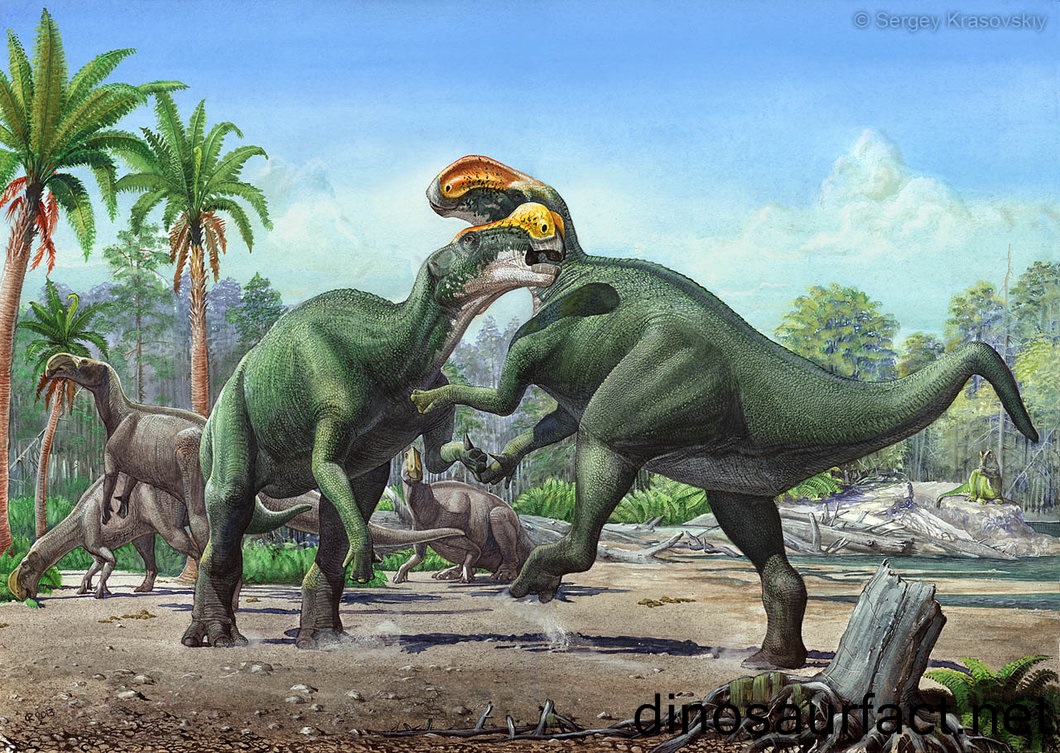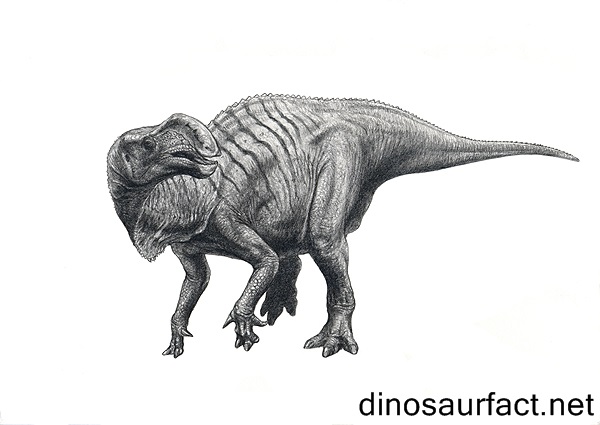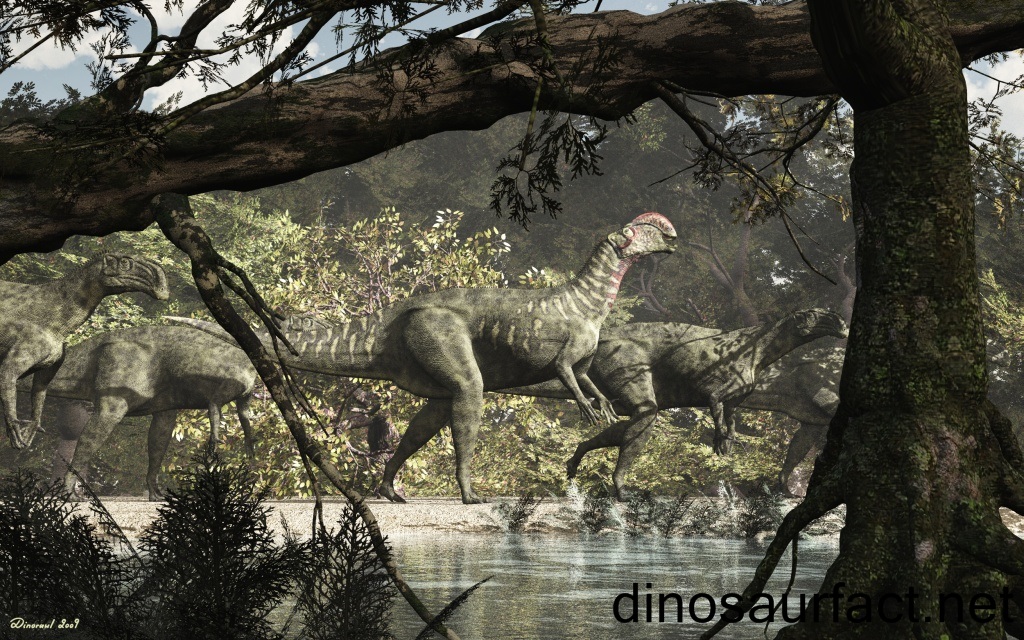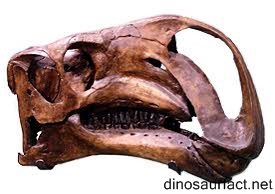 Click to visit the previous dinosaur bio
Click to visit the previous dinosaur bio
 |
|
 |
|
Kingdom: Animalia
Phylum: Chordata
SuperOrder: Dinosauria
Order: Ornithischia
SubOrder: Ornithopoda
SuperFamily: Hadrosauroidea
Genus: Altirhinus
 |
|
 |
|
 |
|

The Altirhinus was an ornithischian dinosaur that existed on the earth in the early Cretaceous Period. Order Ornithischia includes dinosaurs with pelvic bones similar to present day birds. The most prominent feature of the Altirhinus was the shape of its nasal bone. Such cranial and facial adaptations were very common in ornithischians belonging to infraorder Iguanodontia; the Altirhinus is a part of this taxon.
The fossils of this reptile were found in Mongolia. Mongolia lies on the border of Europe and Asia, being flanked by Russia anteriorly and China posteriorly. Thus, the Altirhinus could inhabited both these continents. The time period of its existence was between 120 and 105 million years ago. This lies in the Aptian and Albian ages of the Cretaceous.
The Altirhinus was a moderately large herbivorous dinosaur. Its adult length was around 21 feet and its weight is estimated to be about just above 1000 kilos. Most scientists agree that it was bipedal when walking or running but could touch its forelegs on the ground when needed.
Etymology
The term Altirhinus has Greek and Latin origins. The prefix 'alti' is derived from the Latin word 'altus', which means 'tall' or 'high'. The suffix 'rhin' is used to denote anything related to the nose and is derived from the Greek word 'rhyncos'. Thus, the name Altirhinus roughly translates to ‘high snouted’, which alludes to the tall nasal arch of this reptile.
The specific name A. kurzanovi was chosen to honor the paleontologist Sergei Kurzanov, who was instrumental in the discovery of the Altirhinus. The nomenclature of the dinosaur was done by the British scientist David B. Norman.
Discovery of fossils
The remains of the Altirhinus were discovered in the Khukhtek Formation. This lies in the Dorngovi province of Mongolia. The expedition in which the fossils of the dinosaur were found was collaboratively undertaken by Russian and Mongolian paleontologists. Under the guidance of Sergei Kurzanov, these remains were unearthed in the year 1981.
Nature of fossils
- During the excursion in the Khukhtek Formation, scientists had found bones belonging to more than one individual Altirhinus. They had also found a smaller set of remains, which they believed belonged to a juvenile specimen.
- A skull was indeed discovered among the remains, but it was preserved only on the left side.
- Apart from the skull, bones belonging to the front and hind legs of the dinosaur were chanced upon by the scientists. A few parts of the pectoral and pelvic girdle were also found with this specimen.
- The skull belonging to the second specimen had splintered into individual bones, but it yielded a complete forelimb. Certain rib fragments and vertebrae are also ascribed to this specimen.
- The third juvenile specimen had 34 coccygeal vertebrae intact. It is other bones were diagnostically irrelevant.
- Two more smaller specimen were also discovered in the same vicinity by the team, but the bones were too fragmentary to be of much use.
Classification
- When the bones of the Altirhinus were first excavated in the year 1981, they were thought to belong to the Iguanodon.
- Two different Iguanodon species were described at that time, the I. orientalis and the I. bernissartensis; the bones of the Altirhinus were grouped under the former.
- However, in the early 2000s, scientists deemed that the I. orientalis and I. bernissartensis indistinguishable from each other. They also realized that the bones found in the Khukhtek Formation differed significantly from the other bones of the Iguanodon.
- In the year 2005, David Norman assigned them their own genus, Altirhinus.
- The Altirhinus is currently classified under order Ornithischia, infraorder Iguanodontia and superfamily Hadrosauroidea. Hadrosauroideans are ‘duck-billed’ dinosaurs that are distantly related to the Iguanodon.
David Norman
David Bruce Norman is a contemporary British paleontologist. He is currently associated with the Cambridge University. His key interests are the Jurassic and Cretaceous ornithischians and he has studied the Iguanodon extensively.
The hadrosauroid dinosaur Equijubus normani was named after him.
Physical features
- The Altirhinus was a medium sized dinosaur. It was initially believed to be as long as 7.5 meters, but scientist G. S. Paul, in 2010, posited that it grew no longer than 6 to 6.5 meters.
- It weighed around 1 to 1.5 tons
- The tall nasal arch of this dinosaur is its most unique feature. The purpose of the arch is unknown. Some scientists believe that it could have accommodated an accessory sensory organ giving the dinosaur a very keen sense of smell. Others theorize that it could have a secondary sexual characteristic. It is almost impossible to judge the nature of soft tissues based on bony fossils and hence its exact function may remain a mystery.
- The hind legs of this reptile were a little longer than its forelegs. This has led scientists to believe that it could most certainly balance itself on its hind.
- It had five digits on its forelegs, out of which the middle three were thickened, probably for weight bearing. This indicates that the Altirhinus most like could assume a quadrupedal posture. Scientists are unsure whether it was bipedal on all occasions, using all four legs only while browsing low vegetation, or quadrupedal for most of life, balancing itself on its hind only for reaching leaves from tall trees. The former seems more likely.
- The snout of the Altirhinus was very much like that of modern day ducks. This is an example of convergent evolution. It could most likely browse with the ‘beak’ and chew with its molars simultaneously.
- The tail of this dinosaur was long and stiff.
Habits and habitat
The Altirhinus was clearly a terrestrial dinosaur that that was herbivorous in its feeding habits. Researchers believe that it could run at fairly high speeds to protect itself from the carnivorous theropods. The diastema, or the space between the incisors and molars allowed this reptile to crop leaves very efficiently. It could possibly have had a muzzle that held the leaves that it foraged together and then pushed them back to the molars to be ground.
The habitat of the Altirhinus consisted of woodlands and grasslands that had a few scattered water bodies.
Related species
The Altirhinus is most probably related to the Fukuisaurus and the Muttaburrasaurus.
It perhaps coexisted with the Psittacosaurus and the Shamosarus as their fossils were discovered in the same region of Mongolia.
The final notes
At the time of the discovery of the Altirhinus, hadrosauroids were not understood very well. Most of them were thought to be synonymous with the Iguanodon. After it was assigned a separate genus, many more genera of hadrosaurids were coined and defined.
Index
Extinct Profiles
 Triassic Dinosaurs
Triassic Dinosaurs Jurassic Dinosaurs
Jurassic Dinosaurs Cretaceous Dinosaurs
Cretaceous Dinosaurs Pterosaurs
Pterosaurs Marine Reptiles
Marine Reptiles Dinosaur Extinction
Dinosaur Extinction